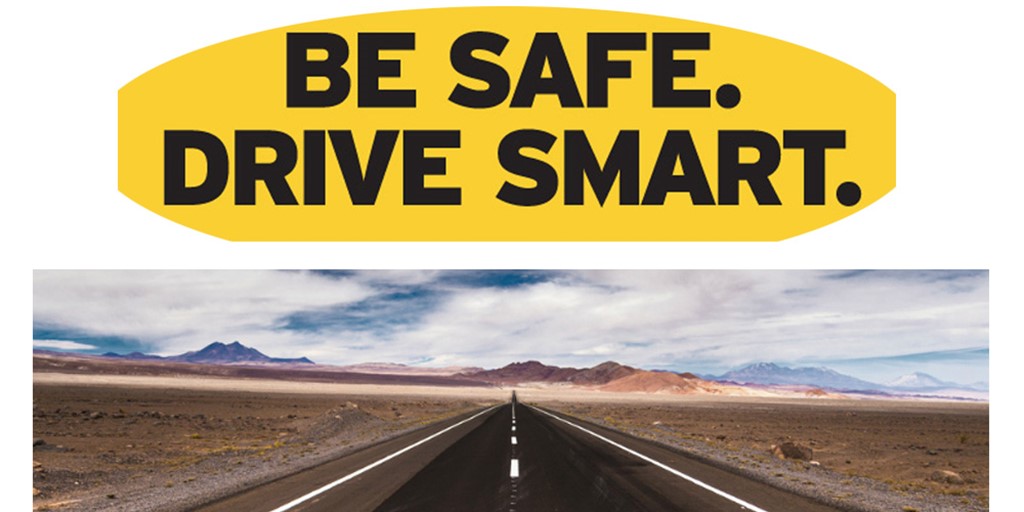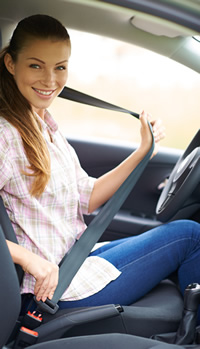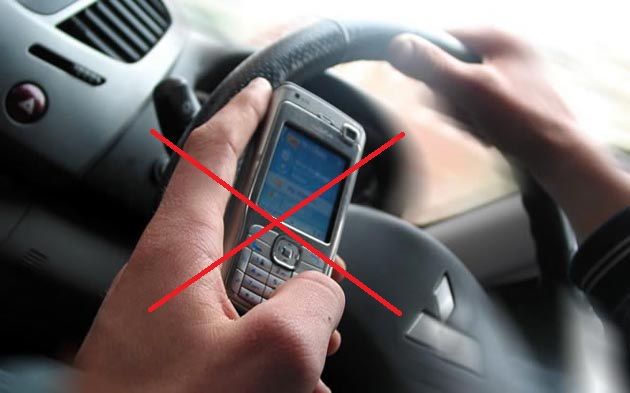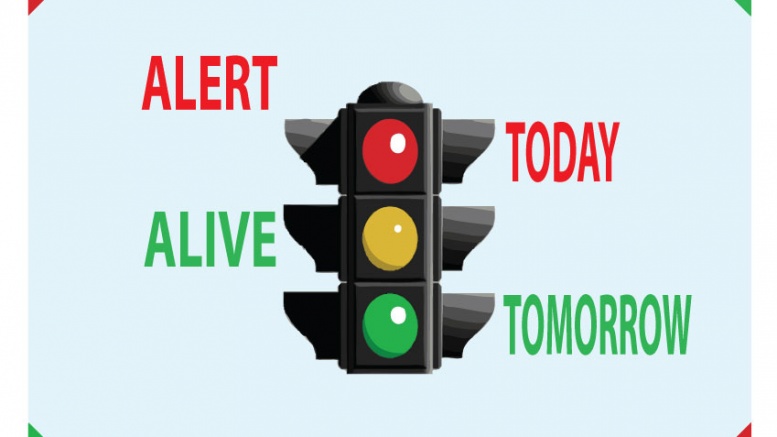hidden
hidden
Blog

Safe Driving
Safe Driving:
Safe driving, good driving
There is a famous saying ‘better be safe than sorry’. Well if you’re a driver and drive on our congested city roads or for that matter the highway, it is always advisable to be wise than being careless behind the wheel.
In order to help do that in the best effective manner here a few tips on do’s and don’ts while driving.

Do’s Seat Belts
Always remember to put on the seat belt before starting the car and setting off to the next destination.
If you have small kids on board then do have an approved kid’s seat in the vehicle of better safety of the child.
Do refer and comply with traffic rules as they are the best way to safeguard yourself and the vehicle against any mishap.
Always adhere to the suggested speed limit as they have been implemented for a reason keeping that specific road or region in mind considering the traffic conditions around it.
Be attentive and alert at all times especially when behind the wheel. Most accidents occur in areas that are best known to us.
Be generous to pedestrians by giving them the first right of way. This practice should be followed as we as Indians generally give it a serious miss to become dangerous drivers on the road which is not right.
Keep a first aid kit handy as it can be of essential use in case of an emergency.
Get your vehicle checked and serviced at regular intervals to ensure a hassle free ride. Check tyre pressure regularly as during the course of their use they tend to lose air. It is advisable to fill them up from time to ti
The Don’ts
Ad
Do not drink and drive as this is one major factor for maximum accidents in our country. Use of a cell phone while driving is a strict no, as it distracts the user and might cause serious accidents. If at all there is a requirement to do so then pullover at the correct stop to one side and attend the call.
Avoid switching lanes frequently as lane driving is safe driving. ever assume that the driver in front of you is going to do exactly what he/she portrays. For example it is not necessary that the car in front which has its left indicator on then it would go in the same direction. It could be that the driver forgot to turn it off so never assume.
Do not indulge in road rage, as this is one situation wherein things could really take an ugly turn like accident and in most cases loss of life.
Do not tail the vehicle in front of you. Always maintain a safe distance so that in case of an emergency one can always stop in time.
Maybe you just got your driver’s license, or maybe you have been driving for years, but feel that it is time for a brush-up on good driving techniques.
Do not Drive without these Documents
-
Valid driving license
-
Vehicle registration certificate ( Form 23)
-
Valid vehicle's insurance certificate
-
Permit and vehicle's certificate of fitness (applicable only to transport vehicles)
-
Valid Pollution Under Control Certificate On demand by a police officer in uniform or an officer of the Transport Department, produce these documents for inspection
Traffic Signals
Stop:
Stop well before the stop line, and don't crowd the intersection. This not only obstructs a clear view of the intersection for other road users, but also make the zebra crossing unsafe for the pedestrians.
You are allowed to turn left at the red signal unless there is a sign specifically forbidding you to do so. When turning, yield the right of way to pedestrians and vehicles from other directions.
Traffic Signals
Stop: Stop well before the stop line, and don't crowd the intersection. This not only obstructs a clear view of the intersection for other road users, but also make the zebra crossing unsafe for the pedestrians. You are allowed to turn left at the red signal unless there is a sign specifically forbidding you to do so. When turning, yield the right of way to pedestrians and vehicles from other directions.
Be Alert:
The Amber light gives time to vehicles to clear the road when the signal is changing from green to red. If caught in the Amber signal in the middle of a large road crossing do not press your accelerator in panic but do continue with care.

Go:
If first in line, do not go tearing off at the green signal but pause to see whether vehicles from other directions have cleared the road.
Sometimes you are allowed to turn left or right too, unless separate signs exist for each direction. if turning, yield the right of way to pedestrians and vehicles from other directions.
strong text

Be Alert:
The Amber light gives time to vehicles to clear the road when the signal is changing from green to red.
If caught in the Amber signal in the middle of a large road crossing do not press your accelerator in panic but do continue with care.

Go:
If first in line, do not go tearing off at the green signal but pause to see whether vehicles from other directions have cleared the road.
Sometimes you are allowed to turn left or right too, unless separate signs exist for each direction. if turning, yield the right of way to pedestrians and vehicles from other directions.
• Stay Alert - Actively pay attention to your actions and those of the drivers around you when you are driving.
• Avoid Assumptions - Don't make the mistake of assuming that other drivers are going to do or what you think they should do.
• Use Turn Signals - While you can't depend on others always signaling their intentions when driving, you can certainly control whether or not they have realistic expectations for your actions. Always use your turn signals in advance of making a lane change or turning.
• Buckle Up - Wearing your seat belt is an essential safety tip for drivers. Not only are you more likely to get injured in an accident if you aren't wearing a seat belt, you can also be fined for failing to do so.
• Follow Traffic Signals - Pay close attention to and obey stop signs and traffic lights.
• Respect Yellow Lights - Remember that the intent of a yellow light is to notify drivers to slow down and prepare to stop. A yellow traffic signal should not be viewed as a sign to step on the gas to rush through an intersection before the light turns red.
• Come to a Complete Stop - When you see a stop sign or a red light, it's important to bring your vehicle to a complete stop, even if you think no other vehicles are coming.
• Do Not Text and Drive - It is never acceptable to send text messages when operating a motor vehicle.
• Obey Speed Limits - When driving, it's important to stick to the posted speed limit at all times. The restrictions placed on vehicle speed are not established arbitrarily. Rather, they are carefully selected to maximize safety for drivers and for individuals in the homes, businesses, and other organizations in the areas where roadways are located.
• Make Adjustments for Weather-When the weather is less than perfect, such as rainy, snowy, or foggy conditions, use extra precautions when driving and follow guidelines for staying safe in the particular situation you are facing.
• Exercise Patience - Many accidents are caused by impatient drivers who are rushing to get from point A to point B. While time is certainly a valid consideration when traveling, safety is even more important.
After all, if you are involved in an accident you'll certainly experience more of a challenge arriving at your destination on time than if you simply exhibit patience while driving.
• Be Predictable - Don't make sudden stops or lane changes. Instead, take care to ensure that other drivers are likely to be able to predict your actions to maximize safety.
• Never Drive Under the Influence - It's essential to avoid operating a vehicle if you have been drinking, taking certain types of prescription or non-prescription drugs, or are otherwise impaired.
• Yield Right of Way - When other drivers has the right of way, be sure to yield to them. Also, don't make the mistake of assuming that everyone else will yield to you when they should. Regardless of who has the right to go, yield if it seems that the other driver may not be observing standard practices for yielding.
• Know Where You Are Going - Plan your travel route ahead of time so that you aren't struggling to figure out where to go while you are operating a motorized vehicle.
• Respect Stopped Vehicles - When passing vehicles that are stopped on the side of the road, move over to get out of the way if the way is clear for you to change lanes. If changing lanes is not possible, slow down while passing stopped vehicles.
• Avoid Distractions - Sending text messages isn't the only dangerous distraction that drivers need to avoid while operating a vehicle. Changing CDs, using cell phones, eating, and interacting with passengers are just a few examples of the types of distractions that you should take care to avoid when driving.
• Use Headlights When Needed - Headlights aren't just necessary at night. When you are driving in the rain or fog, turning on your headlights can play an important role in keeping you - and those around you - safe on the road.
• Share the Road - Remember that you are not the only driver on the road. An important safety trip that everyone needs to follow is the need to share the road with others graciously, recognizing that all drivers deserve to be treated with respect.
• Proper Vehicle Maintenance - Take care to ensure that your automobile stays in good working condition. This includes keeping fluids topped off, performing schedule engine maintenance, making certain tires have plenty of air, and ensuring that the vehicle's exterior lights are functional at all times.
Nimmadthi Do’s and Don'ts on Safe Driving
• Don't drive when drunk. Drunk driving is the No.1 cause of car accidents, making it a crime in many cities.
• Don't speed.
• Don't use phones.
• Don't nod off.
• Don't Cross The Yellow Line
• Do Not Brake Suddenly except for safety reasons.
• Do Not Drive on the road if you are unwell or after taking medication
• Do not use mobile phones or other gadgets when driving
• Do Wearing a Helmet for Two Wheeler Drivers
• Do wear seat belts.
• Do Exercise caution in bad weather.